ELO DEVELOPMENT - The Past 61 years.
Some folk like to point to the past, to the actual fact that there have been times when business leaders, and others have worked against allowing new industries to move here. IN doing so they like to blame that on why East Liverpool is in the shape that it is today.
Well there is some truth to that but however, it isn't quite as simple as that either.. There is more to it then just that. I will begin this with some wise words by a man who knows something about crowing a community. He played a big role in growing ELO in the first place. A grandson of the founder of ELO.
"And now having, as I think, fulfilled my promises at the outset, permit a few suggestions.
A political axiom is that 'eternal vigilance is the price of liberty." I think it equally true, the cooperative efforts are essential to the prosperity of any community-- I allude of course to public enterprises. With capital now accumulated in Liverpool Township, and with united effort, you should, to use the phraseology of Caleb and Joshua, "be fully able to go up and possess the land"-- that is, you are fully able to continue the prosperity and [growth and prosperity] of the place, an active and intelligent cooperation in procuring or wooing other industries or manufacturing enterprises to those already in operation. I have learned through the press that opportunities have been let pass by, for the want of diligence engineering and unity of action. With the proper effort, you should have had a railroad crossing at Babb's Island for a railroad to Pittsburgh, and a like connection with New Lisbon; also glassworks, ironworks, etc.
You need a pleasant drive on which to air your friends and talk business to them, when they come to see your beehive city. The township of St. Clair and Liverpool would scarcely feel the amount of tax necessary to make such a road between Liverpool and Calcutta. It should be macadamized with limestone; in fact all the avenues leading into the town should be improved -- township trustees and City Council should work harmoniously together in such improvements, being mutually interested."
"St. Clair", "Fawcettstown" – Now East Liverpool — for Seventy-five Years. Written by William G. Smith in 1876. Born here, June 17 1803
Some Facts: what was to become EL was a small village until Potteries began being built and hiring workers. That in turn began attracting the satellite businesses, retailers, grocery store owners, hardware store owners, clothing store owners, which hired more workers and attracted professionals, i.e. Doctors, Lawyers. A need for more schools, teachers and so on. The point being that is a blueprint, one that has worked right here.

The Evening Review, Wed. Nov. 2, 1955 This was a great idea when it was first suggested. That was in the early 1950's. In reality it did far more harm then it did good for the City of East Liverpool. Had it ended where the cloverleaf is or even at Jefferson Street where it did end for a good many years it might have been ok.
But from the moment it was announced it began to have a negative impact on property owners and businesses in the effected area.It cost the city a lot om money in matching funds that could have been spent in other ways to benefit the city and took approx 30 years or more to reach where it is today. It occupies a decent chunk of former East Liverpool real estate. It has become a four lane highway that turns into a two lane city street at Mulberry Street in East End and a two lane highway at the end of the "new" Chester Bridge. It was suppose to go to the Pa Ohio state line in East End. That probably will never happen since neither WV or Pa has any intentions to connect to it with their own 4 lane highways. It did achieve one of its stated goals. iI has helped to reduce downtown traffic to practically zero.
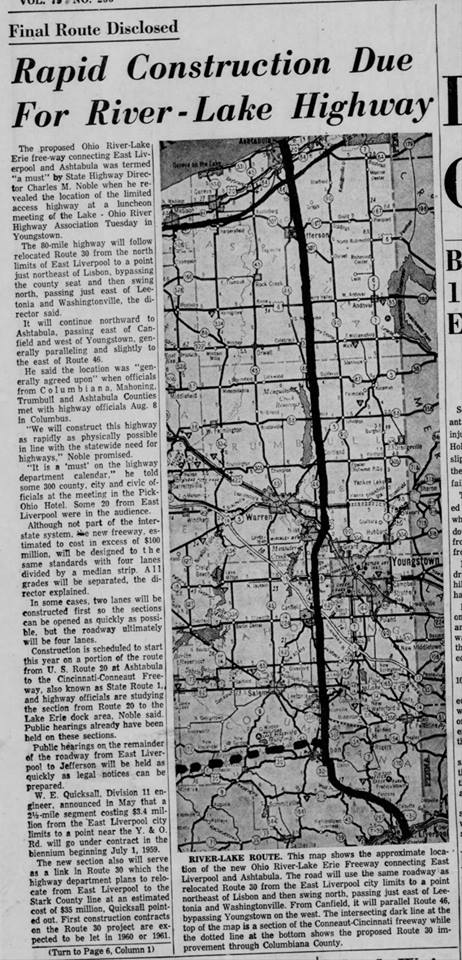
The Evening Review, Wed. Aug. 20, 1958. Sometimes things that happened in other places such as Columbus, Ohio and or Washington DC, far beyond the power of people and government of ELO to control:
The Lake to the River (and hoped to go beyond either via W Va and Pa or PA ) 4 lane highway turned out to have a huge negative impact on ELO.
Even the federal government miscalculated:
"The East Liverpool area is gradually utilizing its land use for new industries and expansion of commercial facilities. With the opening next year of Route 11, a four-lane through way from Ashtabula on Lake Erie to East Liverpool on the Ohio River, a very heavy influx of peoples, goods, commercialism and will subject this entire area to law enforcement facilities and requisites undreamed of, a demand East Liverpool be unable to meet even with a combined coalition to present Economic Area facilities. Upon completion of #30 -- 30 Highway East Liverpool be a crossroads of US Route 30 state Route 7,39 and 11. The Liverpool Economic Areas is centralized in a population -- growth section of the United States for (approximately the entire eastern half of Ohio, southeastern section of Pennsylvania in the Pittsburgh area and northern sections of West Virginia including Steubenville -- Wheeling area) which will increase 25% in population within the next five years and be the fastest-growing section of the entire nation in the next 10 years"

The Evening Review, Wed. Aug. 20, 1958
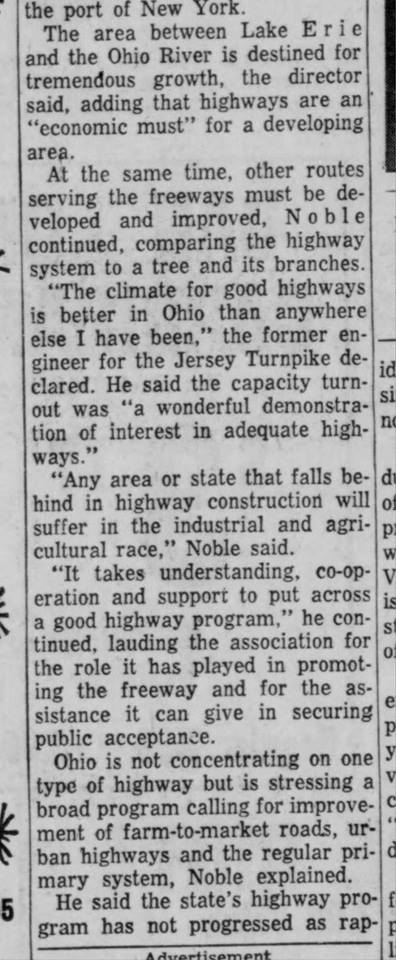
The Evening Review, Wed. Aug. 20, 1958

The Evening Review, Wed. Aug. 20, 1958
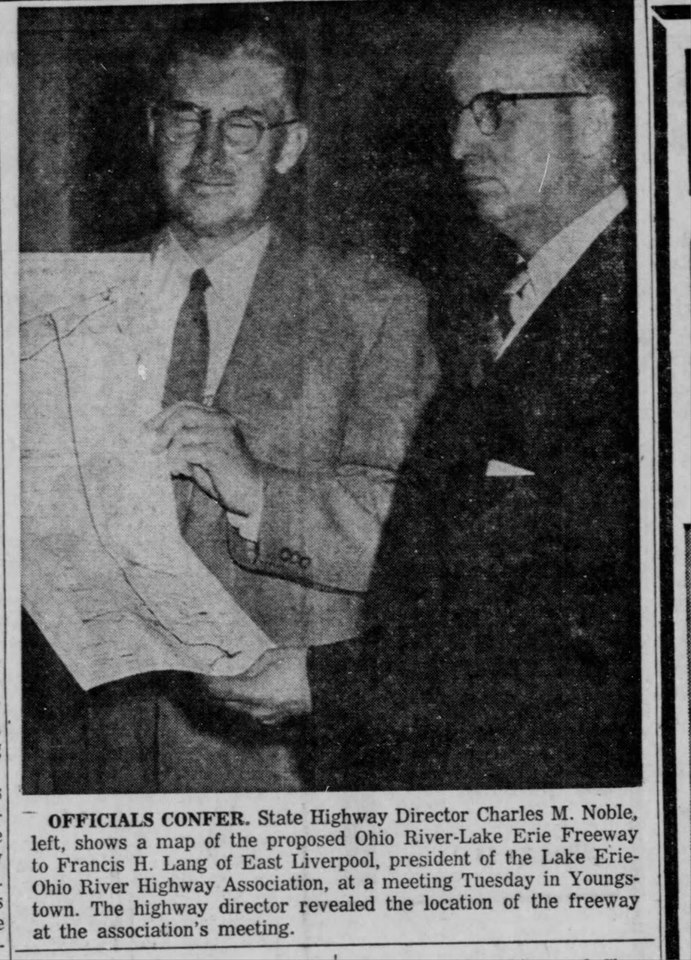
The Evening Review, Wed. Aug. 20, 1958
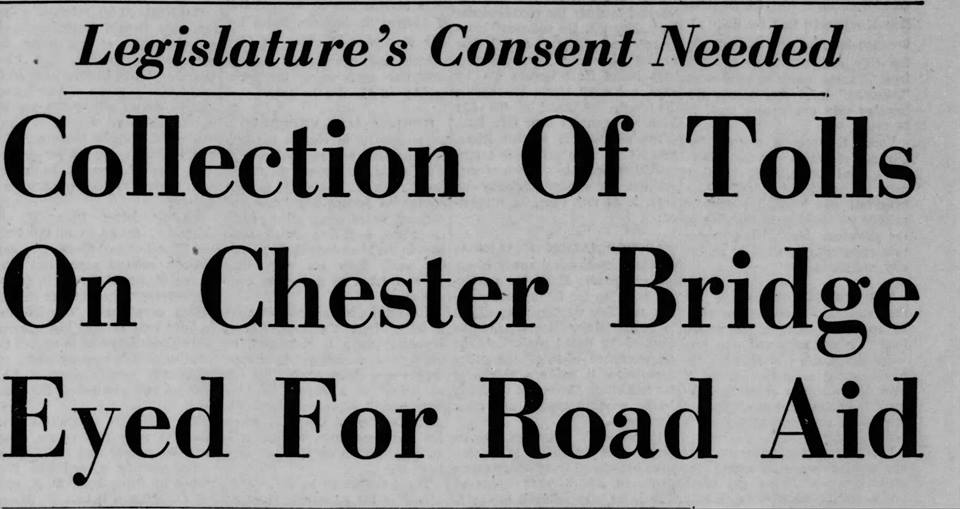
The Evening Review, Tues, Jan. 20, 1959


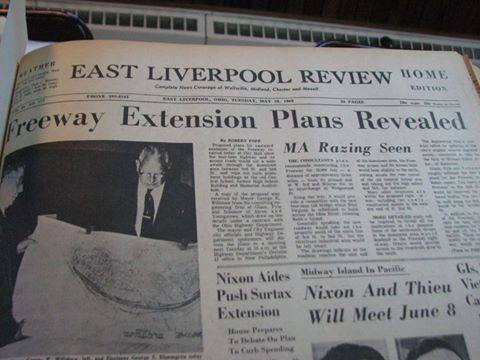
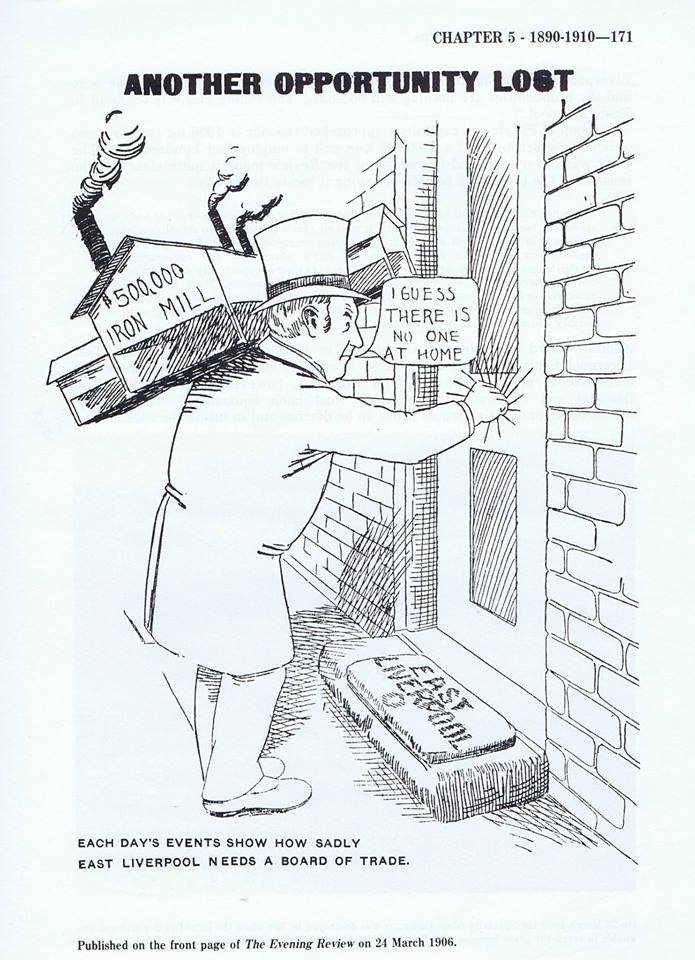
East Liverpool also lost the opportunity to attract other industries during this period because it was unable to present the community as an attractive place to locate and because it would not provide bonuses or other incentives to prospective takers. In 1898 the Review reported that a proposed shoe factory for the city would not locate there because East Liverpool was not anxious enough. When the Lorain Rolling Mill, which estimated that it would employ from two to five hundred workers and do a business of $300,000 a year, sought a site in 1903, the editor of the Tribune stated, "Past experience, . . . shows that East Liverpool is not prone to assist manufacturing concerns desiring to come here and the probabilities are nothing will be done." The rolling mill was not built in East Liverpool.40 A group of Pittsburgh capitalists approached the city in 1906 for twenty acres of land on which to build a $500,000 iron mill to employ four hundred men. The plant was never built and the editor of the Review made it quite clear why he considered the possibility remote of having it locate in the city:
Because East Liverpool has no board of trade, chamber of commerce or other body to act for the business interests of the city, it is likely that a proposition to establish a large iron plant in the city will receive little attention or encouragement. By neglecting to organize our forces, to make known the city's advantages and encourage the establishment of new industries, we virtually shut the door of opportunity and allow other towns to secure what we might have if we exerted ourselves. There is plenty of enterprise in East Liverpool and plenty of enterprising men, but until there is a union of effort and a general disposition to promote public as well as private welfare the growth of the city will not be as rapid as it ought
Another board of trade was established in 1909 and merged with the East Liverpool Business Men's Association two years later to form a chamber of commerce to promote the city.'" By this time, however, a crucial decade of financial and employment opportunity had been squandered. The lack of industrial diversification would prove to be detrimental in future decades.
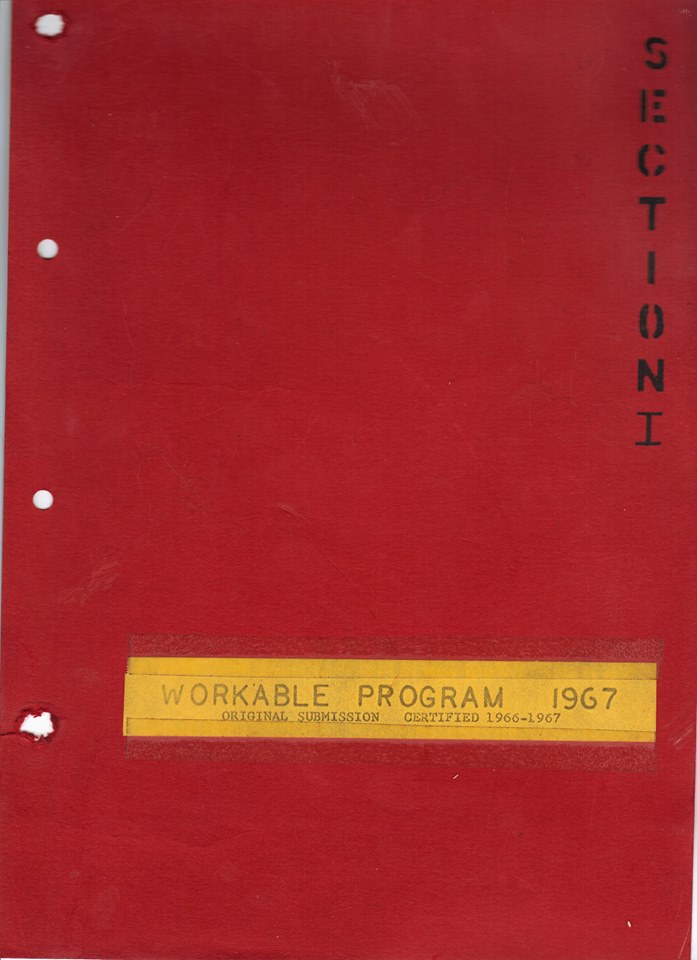
I found two studies in a cabinet (HIstory Room basement of the Public Library) that were written by the city planning commission in a period of time from 1967 - 1972.
It was very educational. For example, retail sales in the city were very healthy showing a healthy and steady increase of 23,739,000 or 60.3% over the previous 11 years
(1958-1969) There had been a 19,027,000 or 43.2% increase over the previous 6 years. That was calculated after inflation was figured in.
So, the city was still a hub, still thriving nicely going into 1970s This was possible because while the pottery industry in and around ELO had been in trouble and declining since around the 1920's and while not a lot of new industry had come into town, new industry had either been growing or came into in surrounding areas. Steel in Steubenville, Weirton and Midland. Auto manufacturing in Lordstown. Many people who lived in ELO worked in those places and those places paid well.
This is not necessarily always in the correct chronological order but it will be fairly close. As the 60's rolled around there were some signs that things needed to be done. . The first section of the 4 lane was completed in the 60's. It ended at Jefferson W 3rd and Jefferson Streets. The second section wouldn't be finished for a good many years in the future. A study was begun to address some of the problems. The study above consisted of over 300 pages. I am not going to post all of it here just a few pages from it.
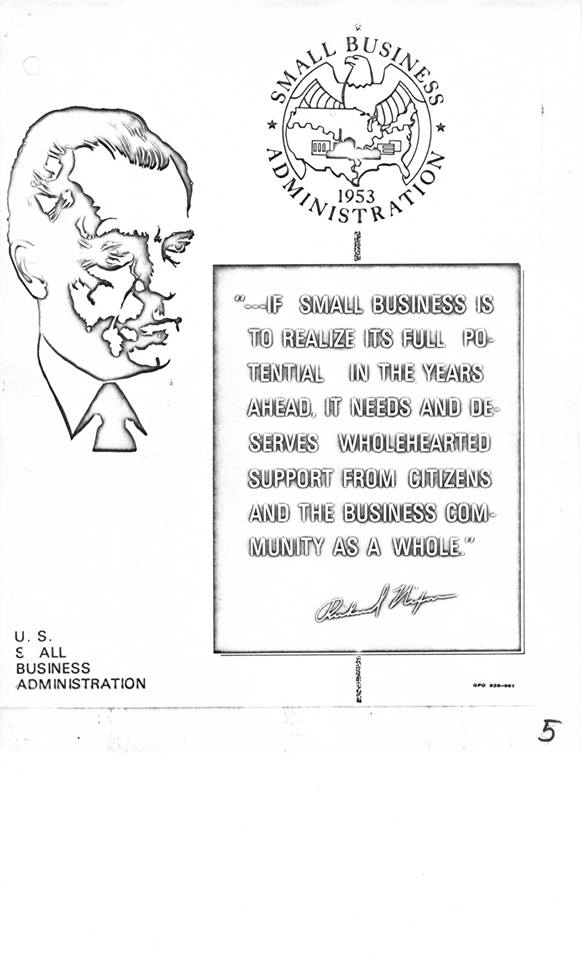
There were problems with parking with traffic. One of the big problems the change from stores being open late on Saturdays to being open late on Wednesday nights.
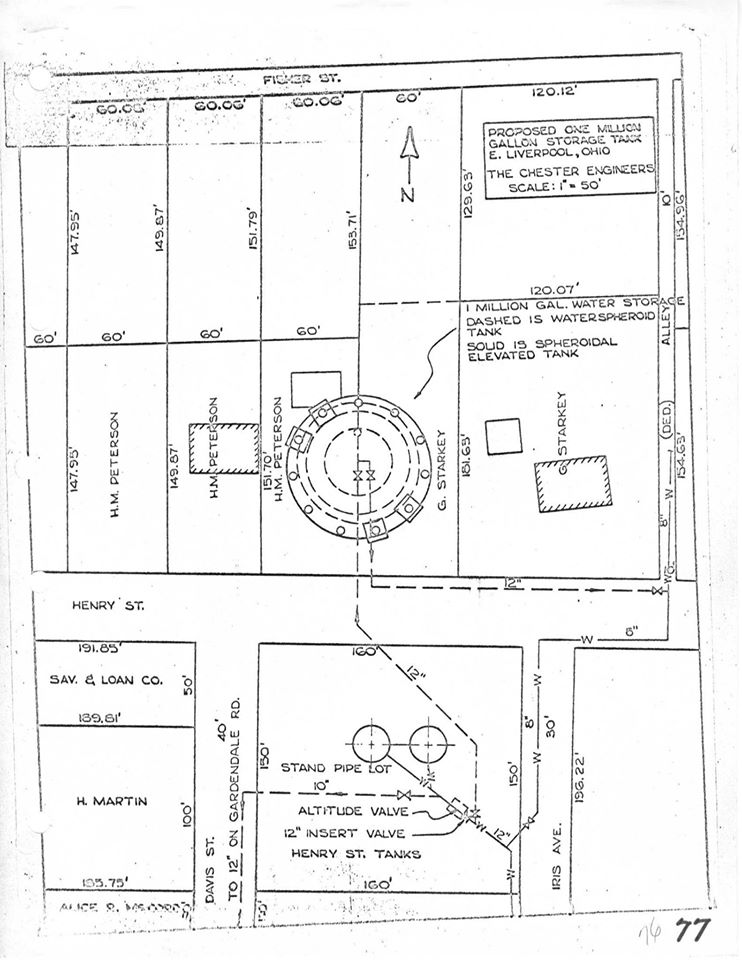
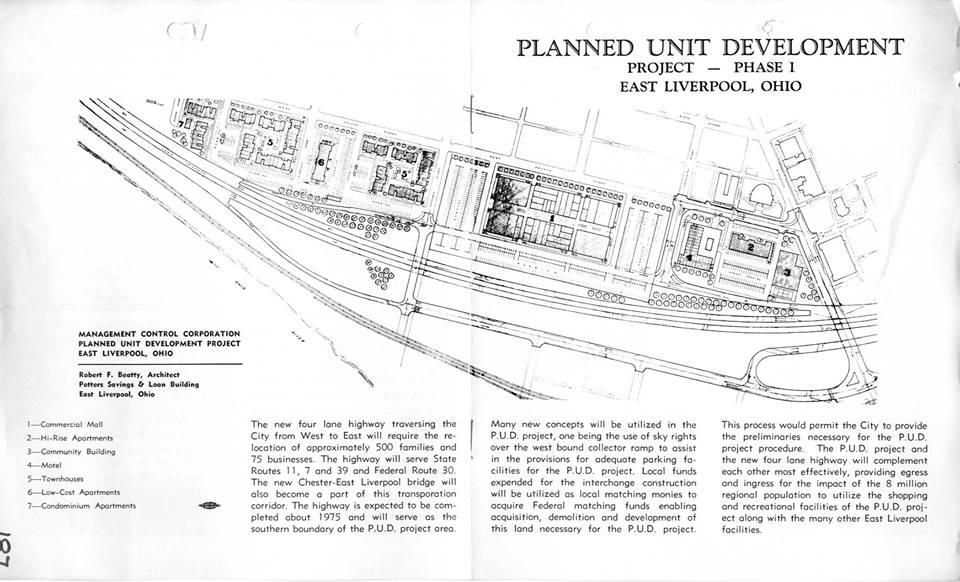
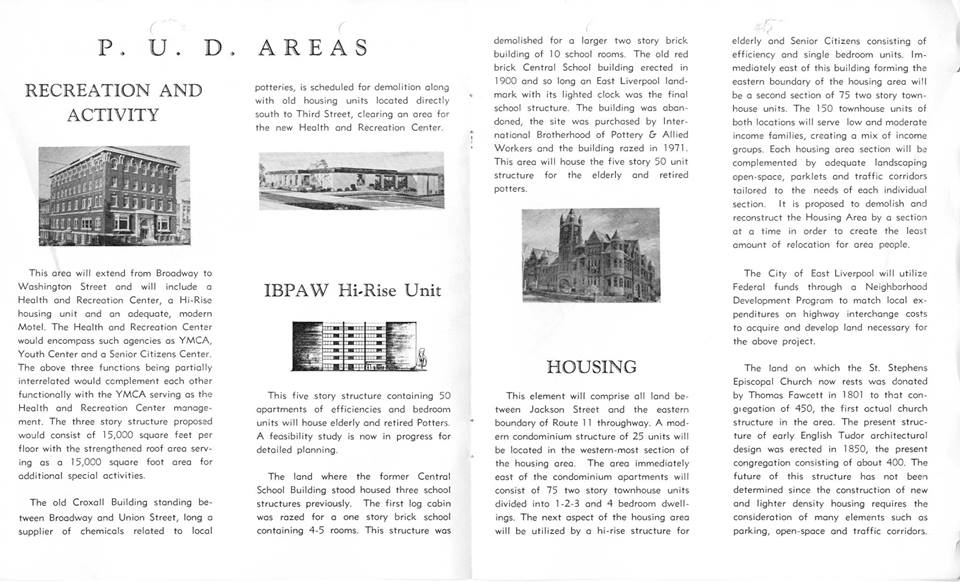
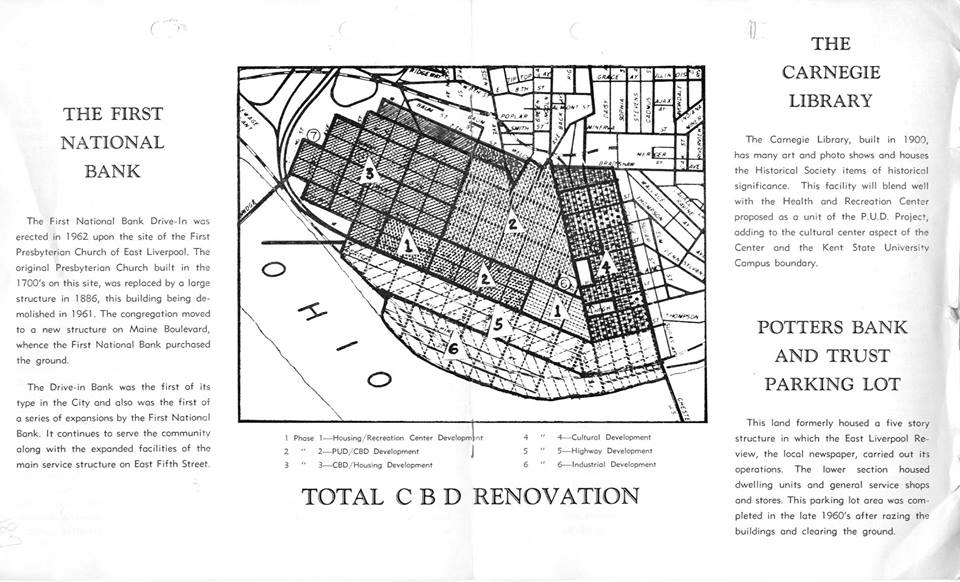
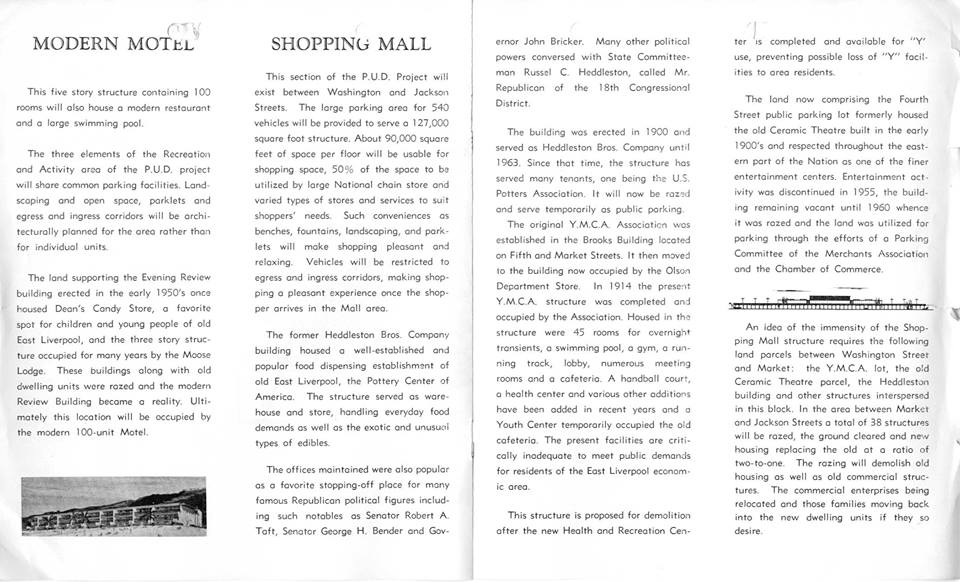

That study along with this one took place between 1967 and very early 1970's. again just a few pages from it
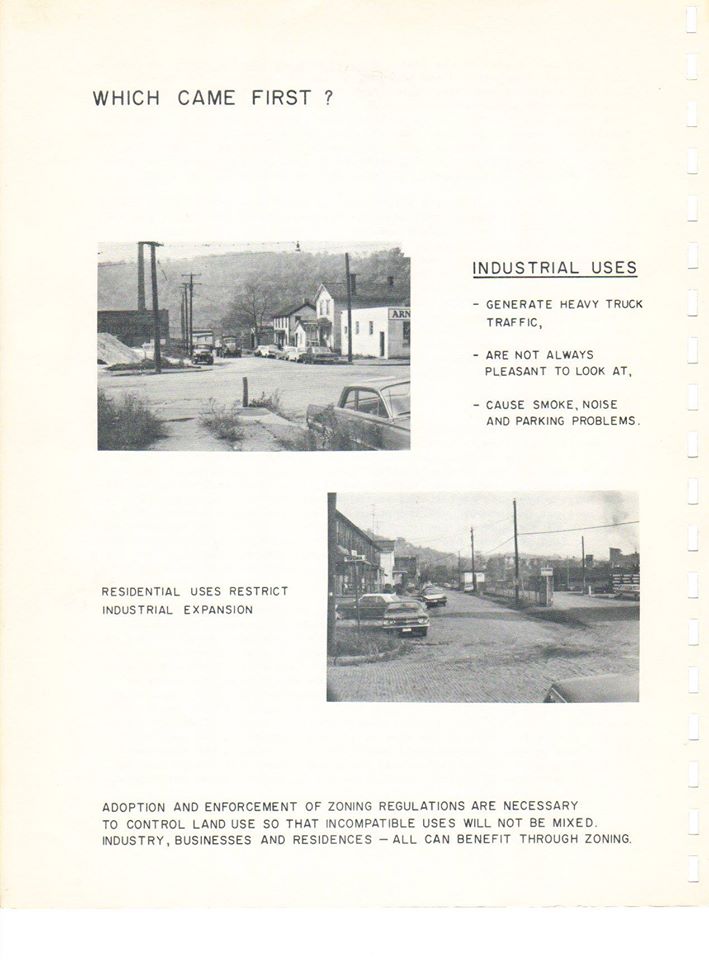
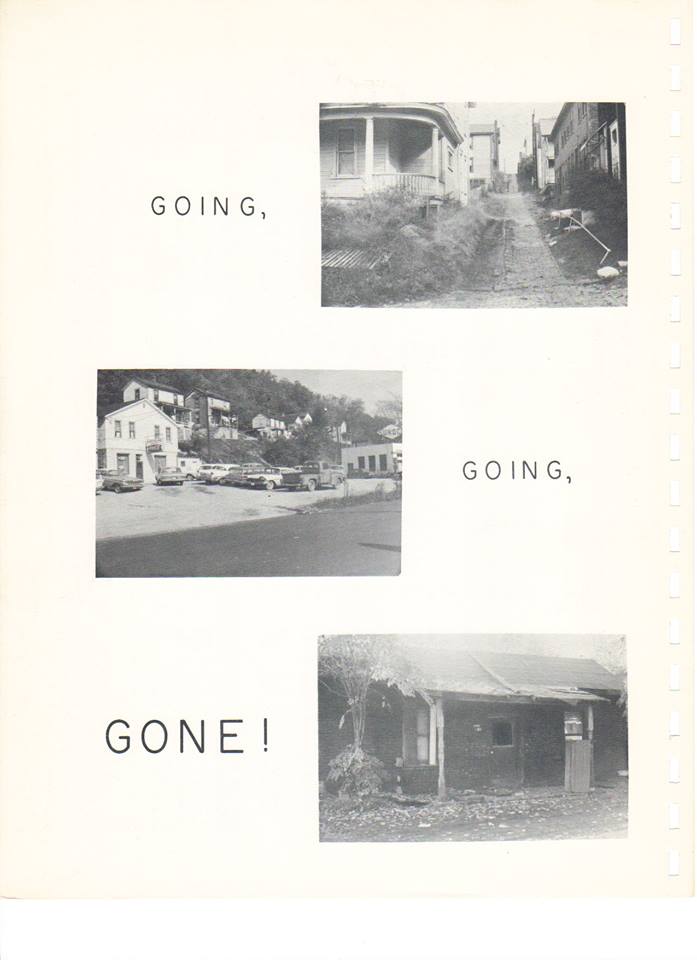
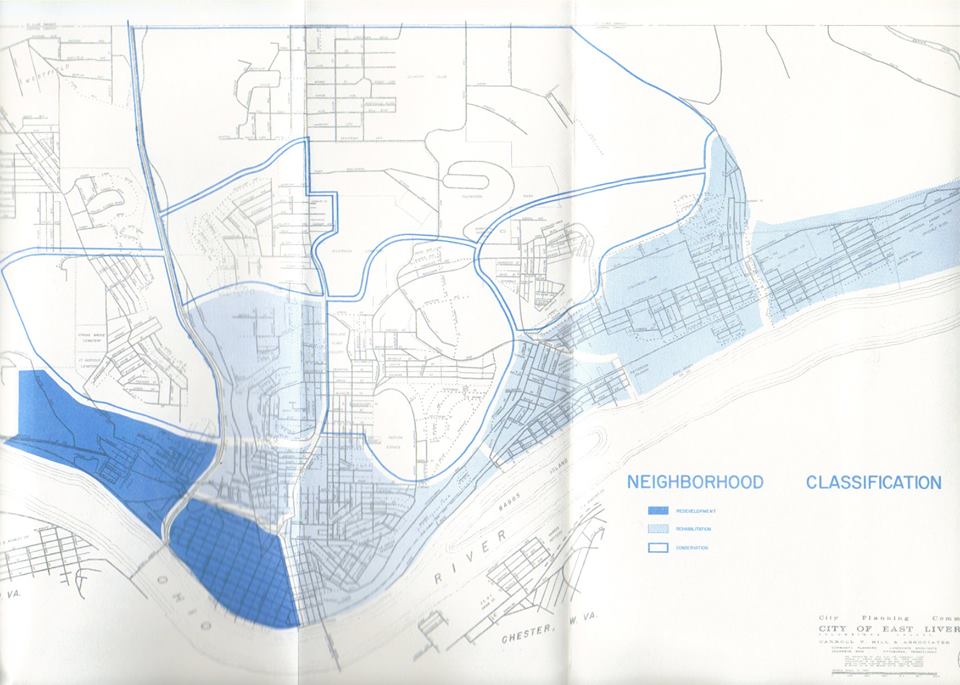
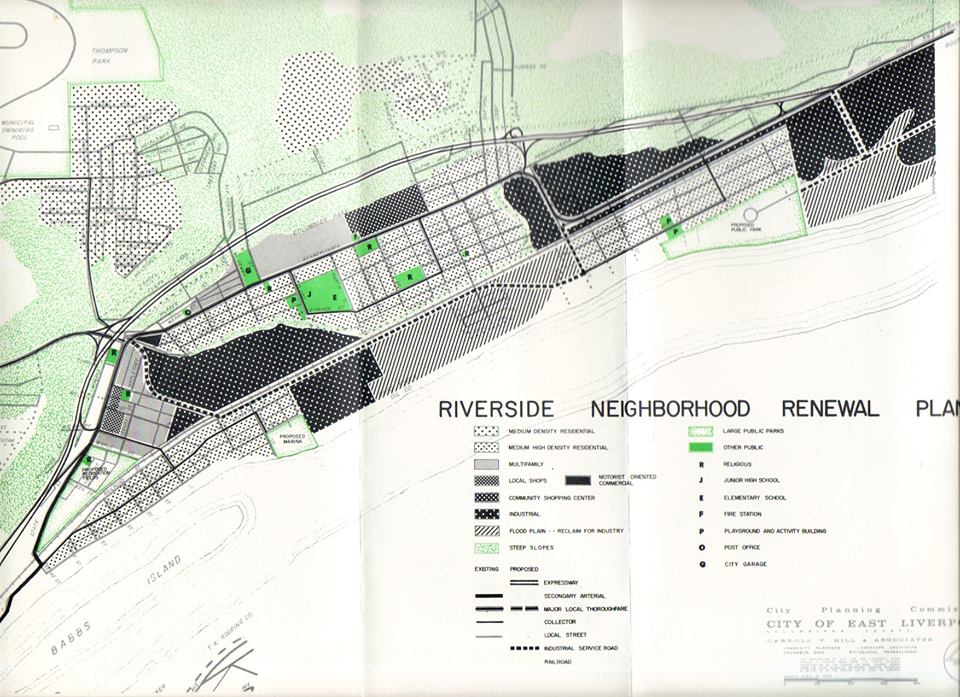
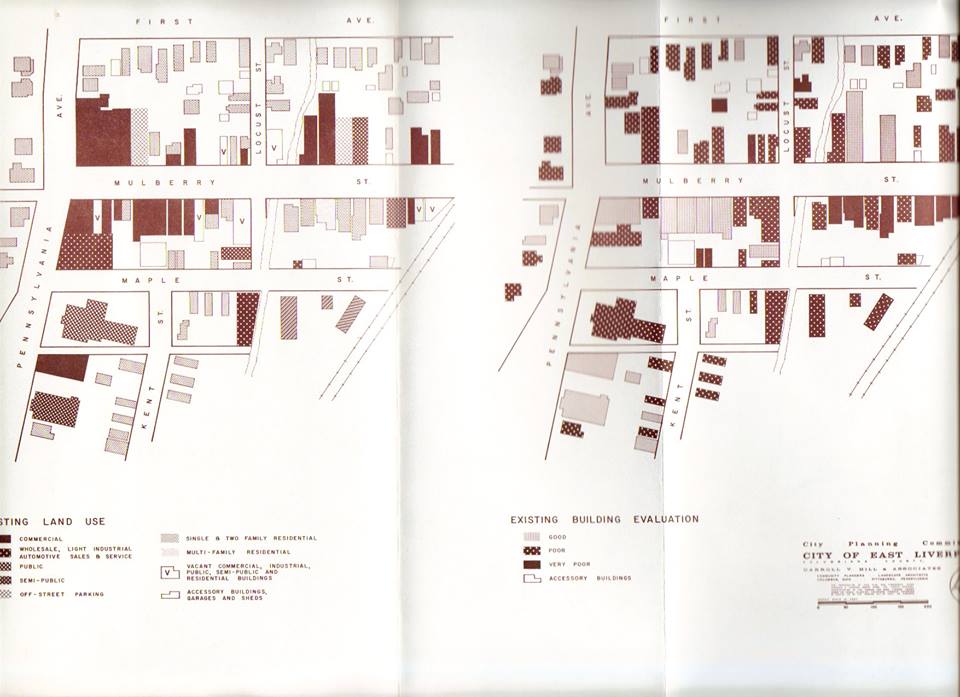
CONTINUE ON TO HOW EAST LIVERPOOL GOT HERE 2
This site is the property of the East Liverpool Historical Society.
Regular linking, i.e. providing the URL of the East Liverpool Historical Society web site for viewers to click on and be taken to the East Liverpool Historical Society entry portal or to any specific article on the website is legally permitted.
Hyperlinking, or as it is also called framing, without permission is not permitted.
Legally speaking framing is still in a murky area of the law though there have been court cases in which framing has been seen as violation of copyright law. Many cases that were taken to court ended up settling out-of-court with the one doing the framing agreeing to cease framing and to just use a regular link to the other site.
The East Liverpool Historical Society pays fees to keep their site online. A person framing the Society site is effectively presenting the entire East Liverpool Historical Society web site as his own site and doing it at no cost to himself, i.e. stealing the site.
The East Liverpool Historical Society reserves the right to charge such an individual a fee for the use of the Society’s material.